History
Milford Sound Tourism: Key Dates in our History.
The need for improved facilities in Piopiotahi Milford Sound has been talked about since the late 1960s. Following the completion of the Homer Tunnel in 1954, which provided much-needed access to the area, there were two main scenic boat operators: the government-owned Tourist Hotel Corporation (THC) and Fiordland Travel (now RealNZ).
Despite growing interest in the region, the infrastructure remained minimal. With very little flat land between the towering cliffs of the fiord and the harbour, visitor facilities were limited to a few portable toilets, two small wharves, and a single office. Meanwhile, international markets eager to experience nature, remote wilderness, and wildlife were steadily expanding.
In response to increasing demand, the Department of Conservation calls for public submissions to help shape the development of infrastructure for Piopiotahi Milford Sound, often referred to as the ‘eighth wonder of the world.’

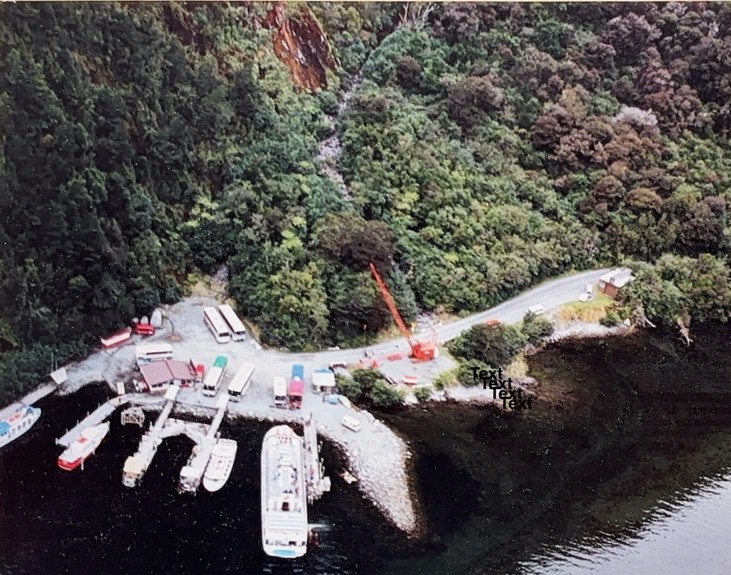
1987
The Tourist Hotel Corporation (THC), Fiordland Travel (now RealNZ) and the local District Council develop a plan and make a submission. To fund it, they form a joint venture, inviting The New Zealand Tourism Board and Department of Conservation (DOC) to join as shareholders. They both decline. This marks the start of the Milford Development Authority which, in later years, became Milford Sound Tourism (MSTL).
MSTL is still owned by the two main cruise operator shareholders: RealNZ and Southern Discoveries, with a small shareholding held by the Southland District Council.
1988
Independent Murray-North report: Milford Sound, Fiordland National Park: Development Options is commissioned by DOC to help balance tourism growth with environmental preservation. The development plan put forward by the joint venture Milford Development Authority is chosen ahead of six other proposals, but DOC required the size of the proposed harbour be reduced by 40% (two decades later this would be increased back to the size of the original proposal).
1990 Te Wāhipounamu, (which includes Piopiotahi Milford Sound) is listed as a UNESCO World Heritage site and international visitor numbers start to take off.
December 1990
DOC issues an Agreement to Lease for the Visitor Terminal and a Licence for the redeveloped area, securing a 60-year tenure through a 30-year lease with a 30-year right of renewal. The landmark agreement is made “in recognition of the unique circumstances surrounding the development of Milford Sound,” underscoring the exceptional challenges and opportunities presented by the iconic, remote location.
12 December 1990
The Milford Development Authority is incorporated to create the sustainable modern infrastructure needed to protect the environment and accommodate the growing number of visitors.
March 1991
Construction teams and heavy machinery start to move into Milford Sound, marking the start of an ambitious transformation. It’s a massive logistical challenge for the teams navigating the rugged terrain of Fiordland. Equipment has to be carefully selected to fit through the narrow, winding roads of the national park and the confined space of the Homer Tunnel. Some materials are transported by sea, with wharves being floated around the coast from Bluff. The entire operation is a feat of engineering and determination, as the remote location and difficult conditions push the limits of what is possible.
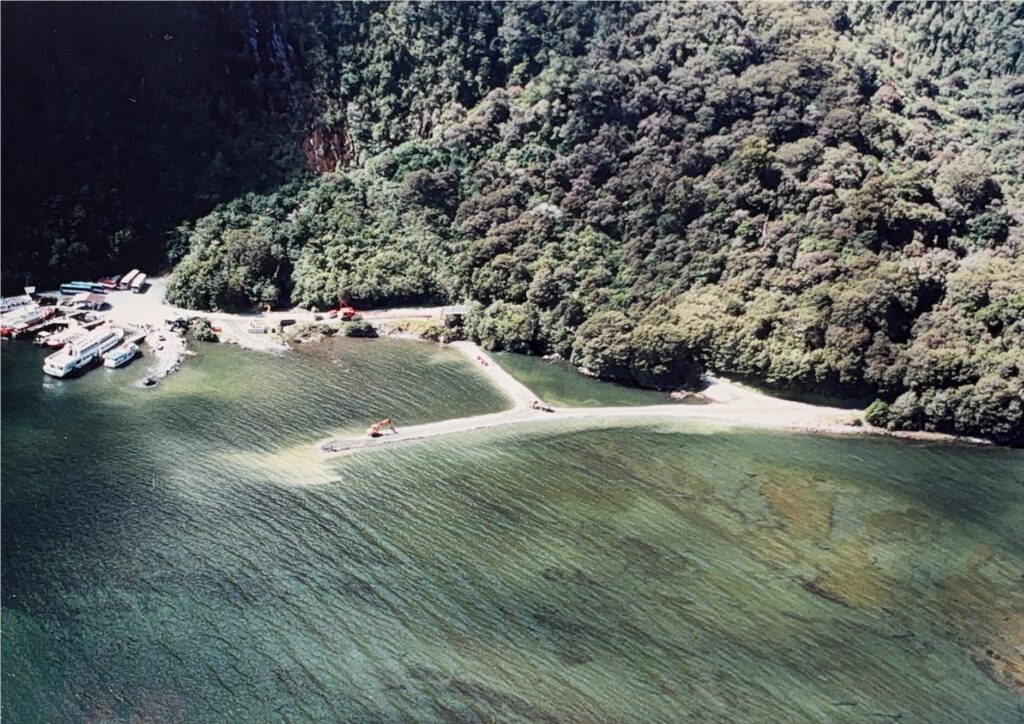
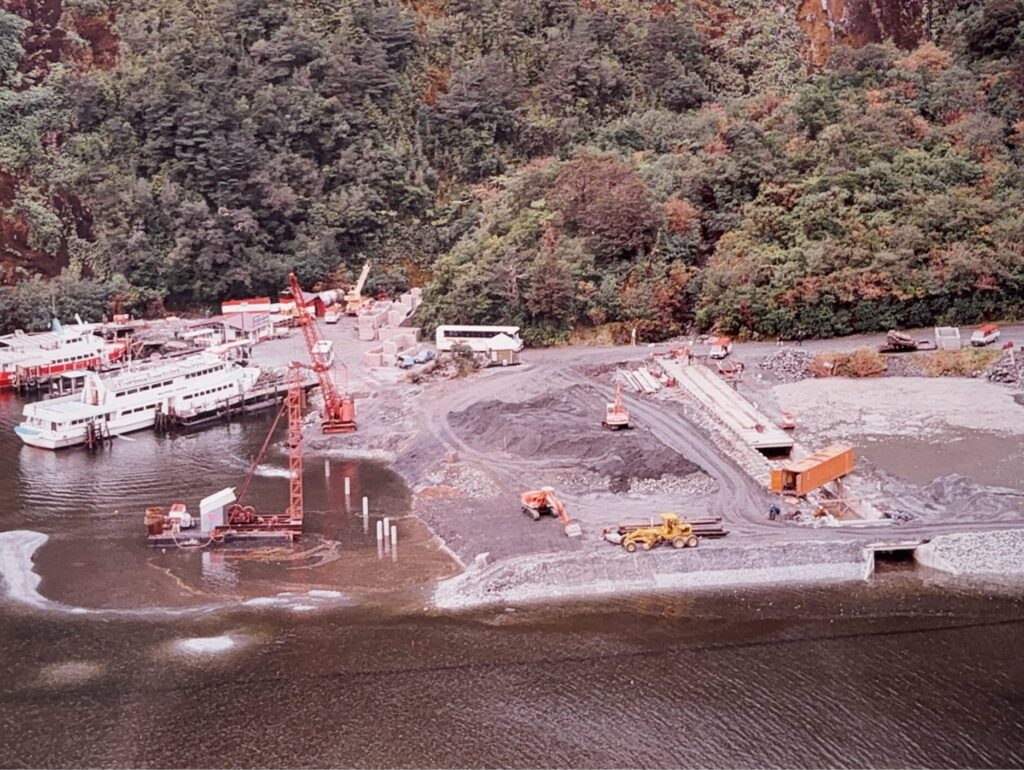
Through the winter of 1991, construction teams start the gargantuan 14-month task of reclaiming 2.3 hectares of land. A massive 32,000 cubic metres of sand and gravel have to be dredged from the harbour and entrance channel to form the land base for enough parking for 88 coaches and 142 cars. The harbour is widened and deepened and a new 150 metre breakwater (four times its original size) is built, to allow safe berthing in all weather.
Work has to be done outside the busy summer season, and winter is challenging for construction teams, with inhospitable southern weather to deal with and avalanches cutting Milford Sound off for days through July and August. The Southland Times (21 April 1992) reports that beer had to be flown in on small planes and helicopters as the hotel had run out of alcohol.
1991
The new state-of-the-art 650 square metre Visitor Centre is designed by McCulloch Architects to represent a fractured boulder left behind by the retreating glacier and split open by frost action. The award-winning design makes reference to local geology through a hug stone facade wall patterned with fissures and fractured window joinery layouts.
It’s also very practical, with an entranceway that allows coaches to load and unload passengers under cover, large toilet blocks, a first-aid room and drivers’ room.
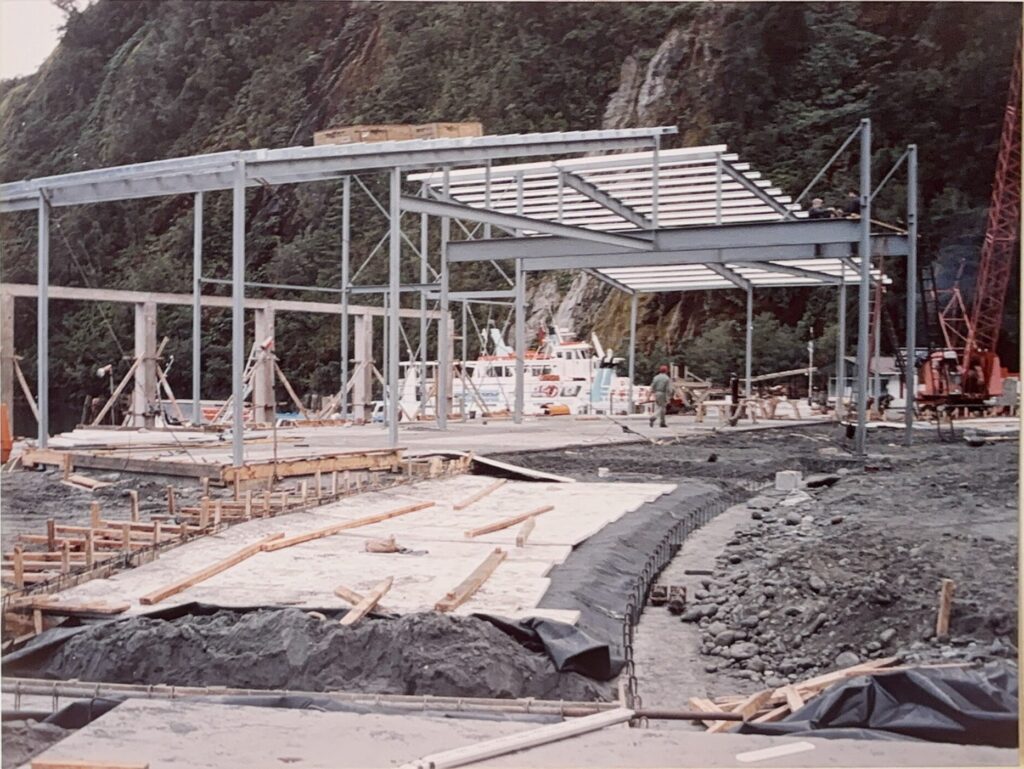

1991
1.4 kilometres of State Highway 94 is realigned, widened and upgraded, to access the Visitor Centre. Built on the water’s edge, it aims to be a seamless link between road transport and the boat terminal. A large promenade area provides easy access to the four new floating wharf structures that include existing pontoons and a service wharf.
1991
A new walkway system is developed to connect the airport, hotel and carparks. The Department of Conservation completes the landscaping using over 11,500 native plants and shrubs propagated from the area.
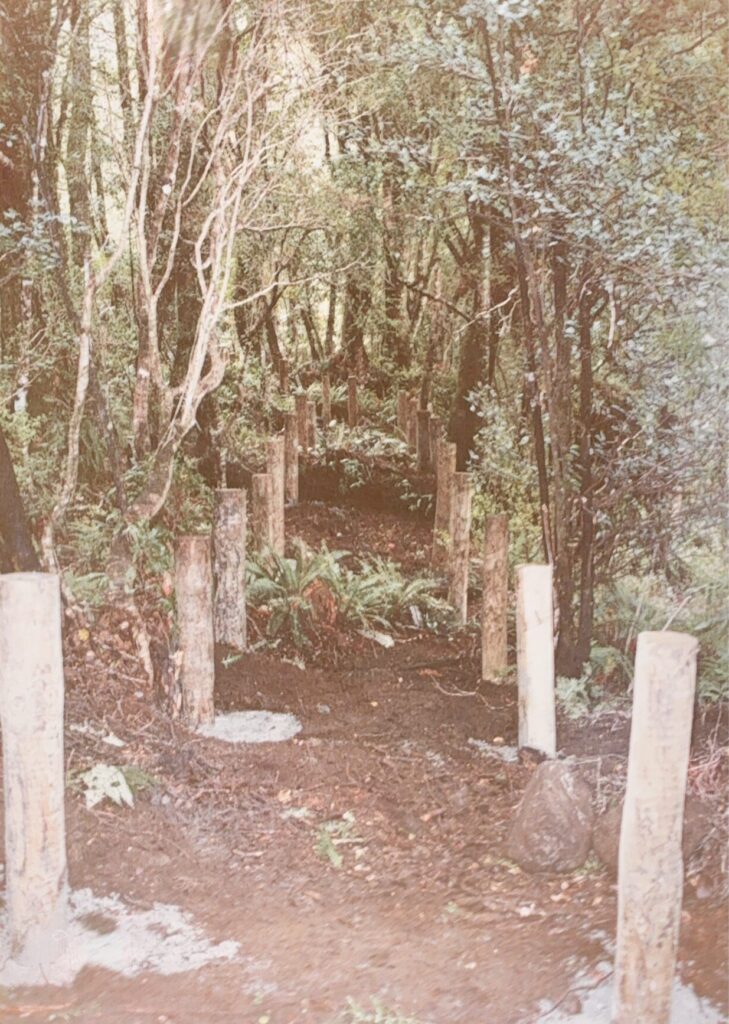

24 April 1992
The $12M Piopiotahi Milford Sound redevelopment is officially opened by Minister of Conservation Denis Marshall and Minister of Tourism John Banks. Hon. John Banks hails the project as a “world-class facility,” marking a significant milestone for the region.
Funded by MSTL through a combination of passenger levies, a $6 million loan, and a $3 million government grant, the redevelopment transforms Milford Sound into a premier destination.
At this time, the stunning fiord is already drawing 250,000 visitors annually, cementing its status as one of New Zealand’s most iconic natural attractions.
June 1992
A new wastewater plant is commissioned. It has to blend into the environment and make wastewater ‘drinkable’ and is designed to be efficiently and easily scaled up as required.
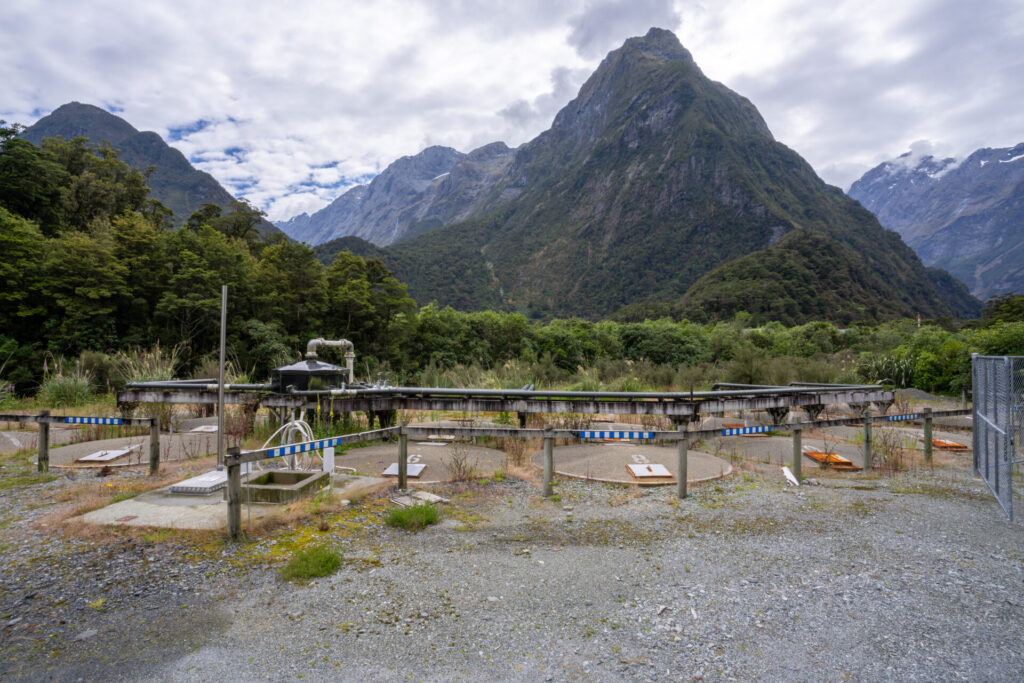

1995
The $330k construction of the Te Huakaue Knobs Flat public toilets is a joint venture between the Department of Conservation and the Southland District Council. Once built, MSTL agrees to take over the ownership and operation of the toilets and the wastewater system. These facilities, often referred to as a much-needed “pee break” for travellers, are the only public restrooms on the two-hour, 120km journey between Te Anau and Milford.
Despite the significant logistical costs involved in maintaining them due to their remote location, the facilities are essential, accommodating hundreds of thousands of visitors each year.
2002 – 2004
Stage 2 of the redevelopment is launched to accommodate the growing number of cruise operators and vessels, expanding well beyond the original two operators and four vessels. The Visitor Centre is extended by nearly 40%, providing more space for visitors. Additional toilet facilities are added, and the covered area outside the terminal is enlarged, along with the deck and passenger boarding area.
As part of the upgrades, the harbour is dredged once again to ensure it can handle the increased traffic. By this time, Piopiotahi Milford Sound is welcoming 513,000 visitors annually, highlighting the region’s continued rise in popularity.

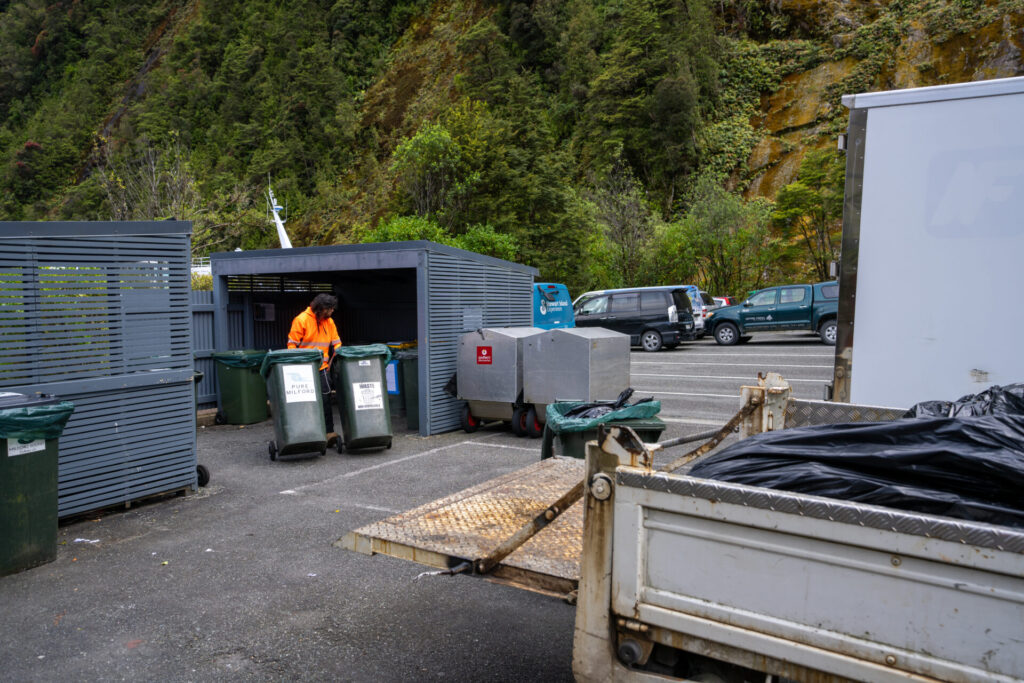
March 2010
Three recycling stations are established, and a comprehensive recycling scheme is introduced with the goal of reducing landfill waste by 75%. Cardboard is compressed into bundles, while plastics, glass, and cans are separated for recycling.
A key principle is that everything brought into Piopiotahi Milford Sound must be removed, ensuring a commitment to sustainability and environmental responsibility.
2012
Following lengthy environmental analysis by DOC and MSTL, a $6M upgrade of the harbour sees a further 22,000 square metres of dredging undertaken to extend the harbour by almost half (40%) and rebuild the breakwater. Existing berths are refurbished and relocated and two new berths are installed. Wharves are made bigger to reflect the growing size of the vessels.
For the first time, visitor numbers drop (to 442,000) after the global financial crisis.
(Article right: Otago Daily Times Dec 27, 2011)
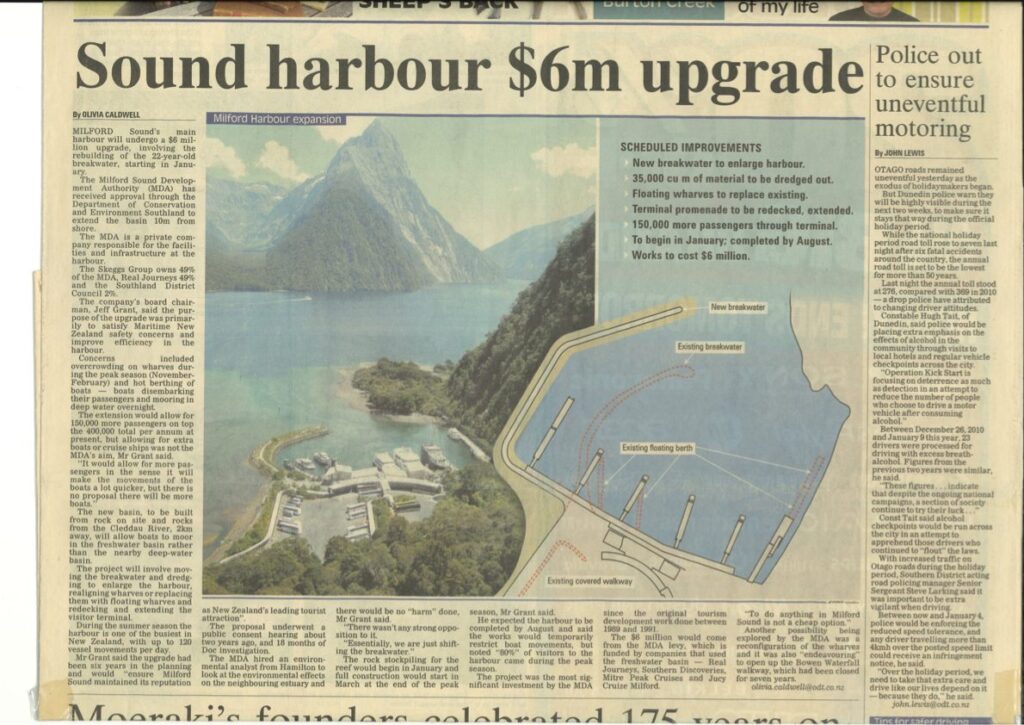

2016
The Milford Development Authority is rebranded to Milford Sound Tourism Ltd (MSTL) to better reflect its evolving role in providing tourism infrastructure in Piopiotahi Milford Sound, transitioning from redevelopment efforts to a focus on long-term tourism management.
March 2018
MSTL acquires the Eglinton Valley Camp complex, to help spread the number of visitors arriving in Piopiotahi Milford Sound through the day. It also provides a strategic emergency evacuation point if required.
Once home for workers building the Milford Road and Homer Tunnel, the accommodation complex is over half-way between Te Anau and Piopiotahi Milford Sound within Fiordland National Park.
The MSTL team works closely with DOC to manage and improve the habitats of threatened or at-risk species. Following extensive trapping and bait programmes, endangered native species like the mohua, long and short-tailed bats, kākā and karakiki can once again be heard or seen in the heart of the Eglinton Valley.

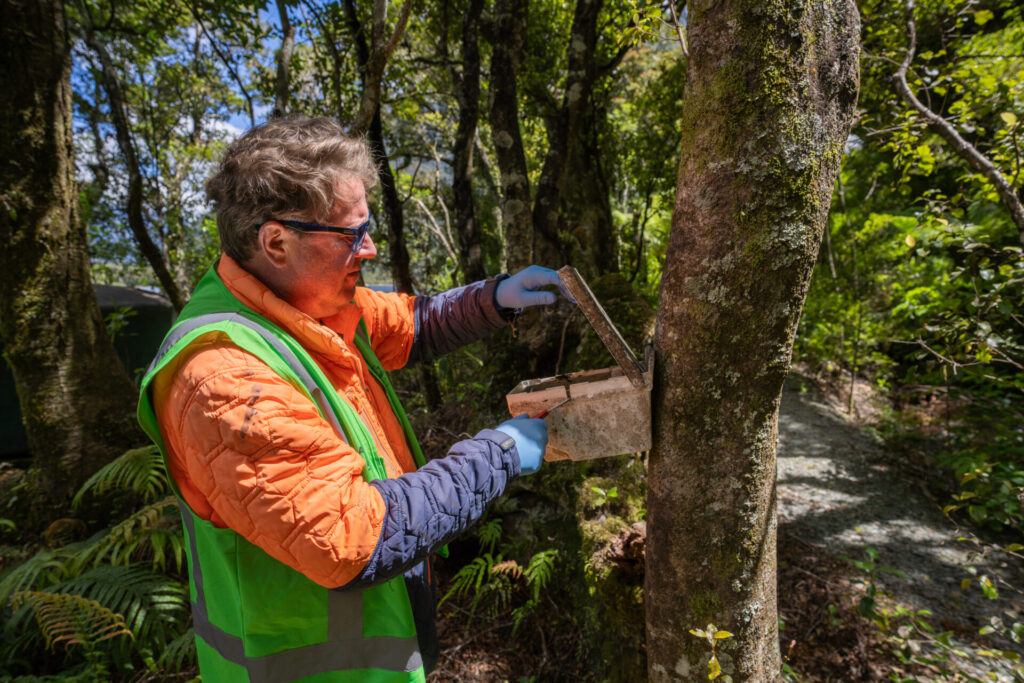
2018
MSTL extends its trapping and bait programmes across Piopiotahi Milford Sound and installs trail cameras to control predators. The team liaises with DOC to target any new areas of concern and there’s never any shortage of MSTL volunteers wanting to help protect this extraordinary but fragile environment.
October 2019
To promote more sustainable travel options and ease the pressure on limited car parking, a ticketless license plate recognition system is introduced in the main car park. A parking fee of $10 per hour is introduced for those using the main car park, while free parking remains available in the more distant carpark. The initiative encourages more visitors to choose coach travel, helping to reduce congestion and environmental impact.

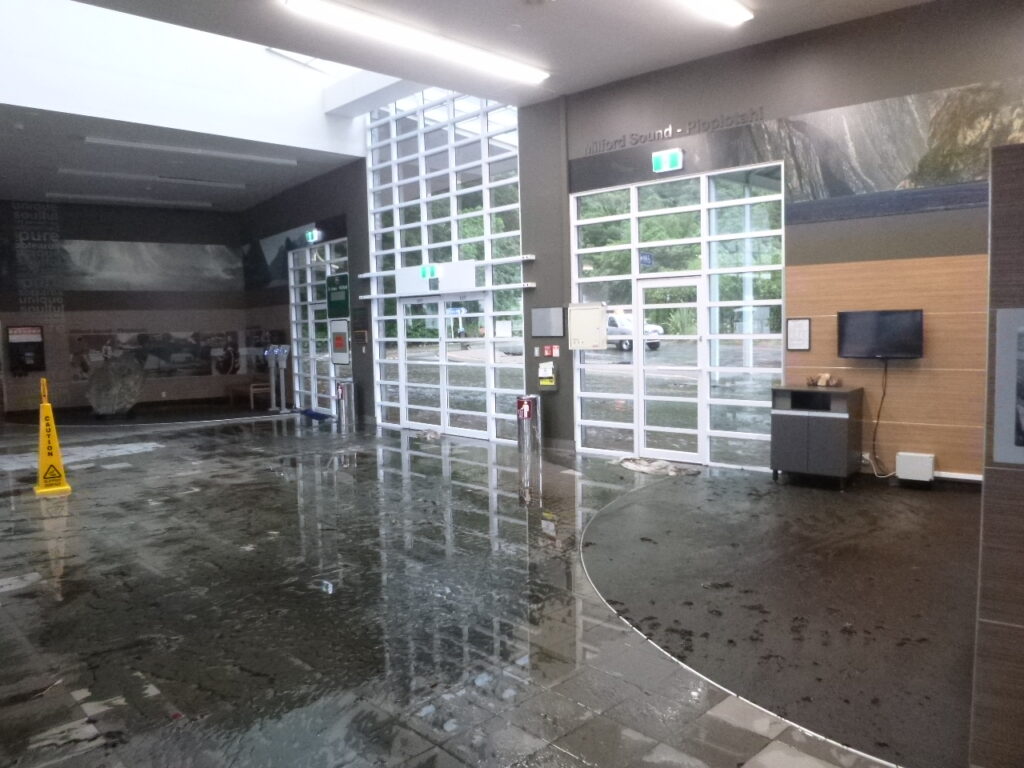
February – March 2020
A State of Emergency is declared for Southland after more than a metre of rain falls in less than three days, triggering widespread landslides and severe flooding. Milford Road is closed for three weeks, cutting off access to the region.
The Visitor Terminal is inundated by floodwaters. As a result, there are no visitors during this period, and the region faces significant clean-up challenges in the aftermath of the extreme weather event.
25 March 2020
A National State of Emergency is declared for New Zealand due to COVID-19, stopping all non-essential travel and tourism.
With its revenue based on passengers alone, this has a huge impact on MSTL. Some of the community remain in Piopiotahi Milford Sound for their COVID isolation, and essential rubbish, recycling and wastewater plant maintenance continues throughout. Domestic visitors return slowly and sporadically for some time and there are no international visitors at all for almost an entire year while the country’s borders remain closed.

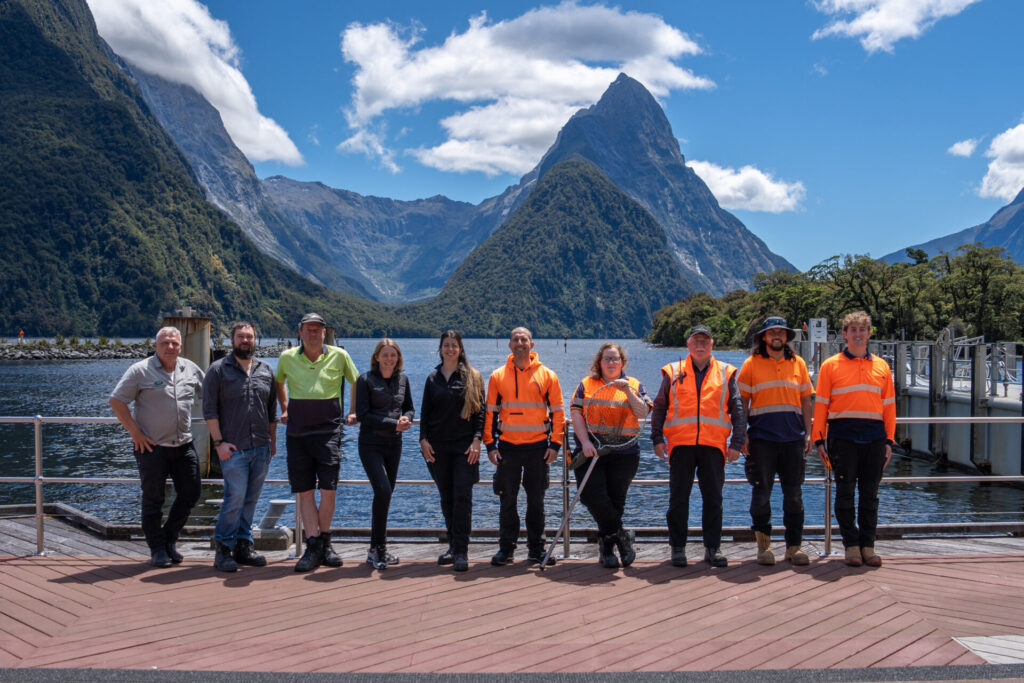
2025
Over the years, the team has steadily grown as its role expands from developing the initial infrastructure to becoming the key provider of essential visitor services in Piopiotahi Milford Sound. The team now operates the harbour, drives the buses, looks after the wharves, visitor terminal, and parking facilities, oversees staff accommodation, and runs Eglinton Valley Camp. It also manages complex wastewater, rubbish and recycling systems.
The team takes great pride in its part in the tight-knit local community. MSTL has played a pivotal role in establishing the emergency response group, and its volunteers form the backbone of the Milford Sound Volunteer Fire Brigade, which operates 24/7 throughout the year.
When visitors leave, the Visitor Centre often transforms into a Community hub, hosting meetings, functions, and even yoga classes. Then it’s back to welcoming visitors from all over the world, and the team continues its work to protect and preserve the pristine wilderness of Piopiotahi Milford Sound.
